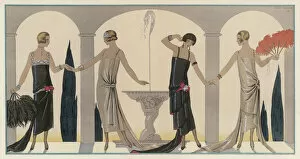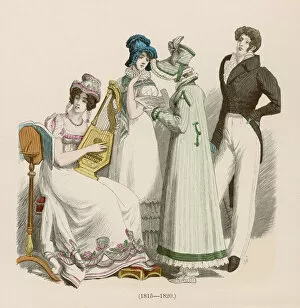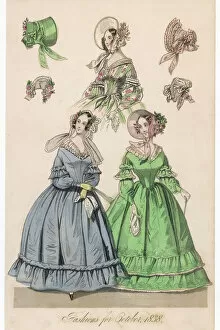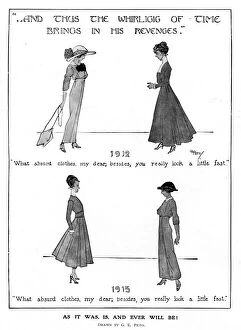Hemlines Collection
"Hemlines: A Journey Through Fashion's Changing Silhouettes" From the elegant evening dresses of Worth to the exquisite English dresses of 1815-1820
All Professionally Made to Order for Quick Shipping
"Hemlines: A Journey Through Fashion's Changing Silhouettes" From the elegant evening dresses of Worth to the exquisite English dresses of 1815-1820, they have always played a significant role in defining women's fashion. In Oct 1838, costume enthusiasts marveled at the intricate details and craftsmanship of English Dresses, but it was the hemline regulations that truly dictated what was deemed appropriate. As WW1 raged on, fashion remained steadfast - reflecting both tradition and innovation. The iconic phrase "As it was. Is. And Ever Will Be" perfectly captured how hemlines continued to shape women's style during this tumultuous era. Yet amidst all the elegance, there were occasional monstrosities in fashion like those seen in 1819-20 when exaggerated hemlines took center stage. Fast forward to 1929; evening dresses exuded glamour as lace frocks adorned fashionable ladies while they skipped joyfully in parks. Hemlines rose higher than ever before, embracing a newfound sense of liberation and modernity. The same year witnessed an array of stunning evening modes that showcased daring cuts and innovative designs – proving that even with changing times, hemlines remained at the forefront of sartorial evolution. A lady at her dressing table would meticulously choose her attire from BON GENRE NO. 20 C. 1805 – carefully considering not just fabric or color but also where exactly her dress would fall on her legs. Through centuries past and present, one thing remains clear: they can more than mere measurements; they symbolize societal shifts and personal expressions within our ever-evolving world of fashion.











